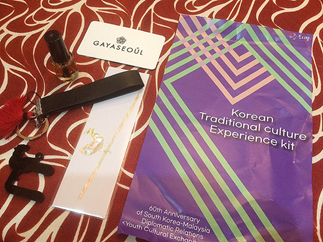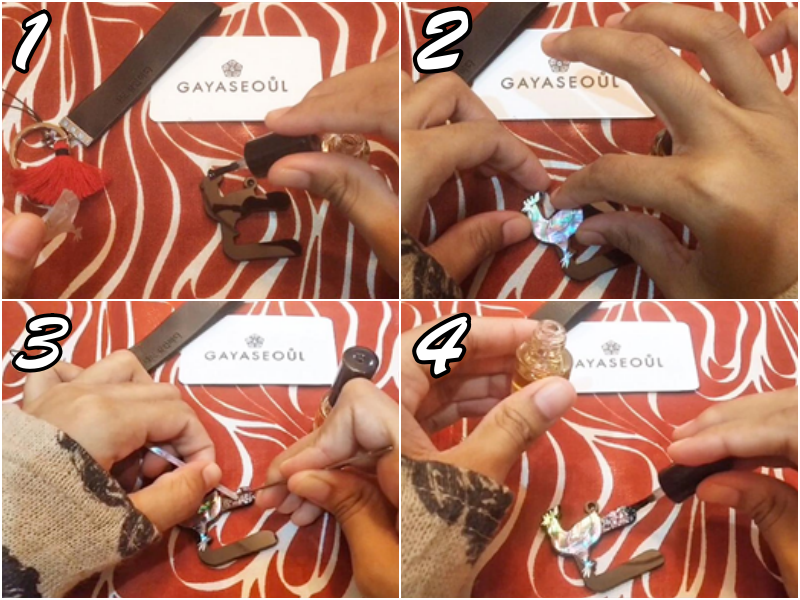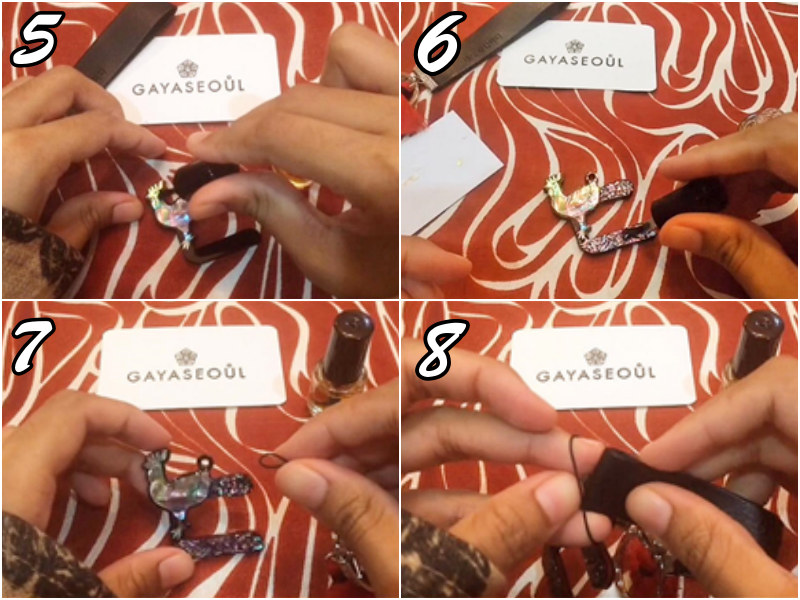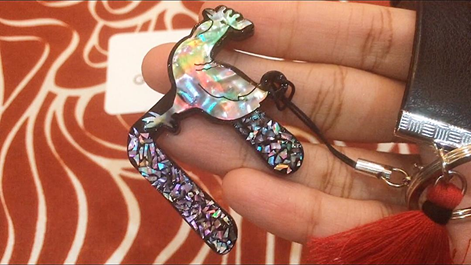- 한국어
- English
- 日本語
- 中文
- العربية
- Español
- Français
- Deutsch
- Pусский
- Tiếng Việt
- Indonesian
By Honorary Reporter Nurin Nabila from Malaysia
Photo = Nurin Nabila
A unique traditional Korean craft that I recently discovered is najeonchilgi (lacquerware inlaid with mother of pearl or nacre). The name comes from the combination of naejeon, or the technique of inlaying the lacquerware with Korean nacre, with the lacquerware chilgi. The lustrous nacre material used in this craftwork, jagae, is made from abalone shell.
China is said to have influenced the art of lacquering with mother of pearl long ago and Japan and Southeast Asian countries later adapted the craft. Lacquering also flourished during Korea's Goryeo Dynasty as lacquered items were given as gifts due to their high quality. Today, najeonchilgi is seen in everyday products like dressers, tables, jewelry boxes and plates.
Though the process can be complicated and time consuming given the repeated coating and lacquering, the delicate touch of inlaying nacre neatly results in a mesmerizing end product that epitomizes elegance and aesthetics.
I made my own mother-of-pearl keychain strap with the DIY Korean Traditional Culture Experience Kit that I received on the 60th anniversary of Korean–Malaysian ties. Though
The following is what I did to make my keychain strap.

This is the kit I received to make the keychain strap. It came with the plastic Hangeul letter ㄷ, a mother-of-pearl strip, transparent nail polish and a keychain strap.

First, I spread a thin layer of the nail polish as the base to glue and stick the mother-of-pearl in the shape of a chicken on the black Hangeul letter.
Next, I applied a little nail polish on the other part and used a sharp object to cut the strip as small as possible and pasted it on the board. Smaller is prettier as each gap needs to be filled. After finishing arranging the shell pieces, I applied the nail polish as a whole so that the nacre was attached properly.

I repeated the process for the bottom empty spaces. After the rest of the mother-of-pearl was used, I applied the nail polish again everywhere as a final topcoat. I smoothed out the surface by applying the nail polish several times, giving the end product an iridescent luster.
Finally, I connected the keychain strap with the completed mother-of-pearl board.

And that was my first (but hopefully not my last) experience in making a mother-of-pearl keychain.
enny0611@korea.kr
*This article is written by a Korea.net Honorary Reporter. Our group of Honorary Reporters are from all around the world, and they share with Korea.net their love and passion for all things Korean.